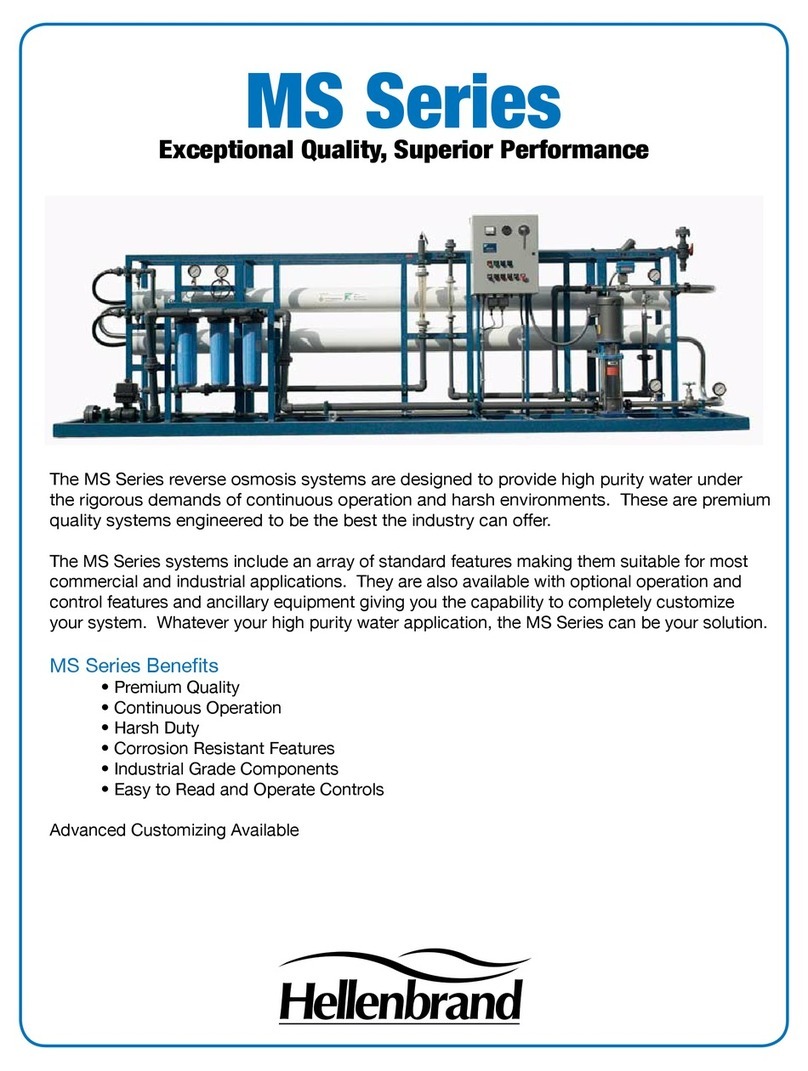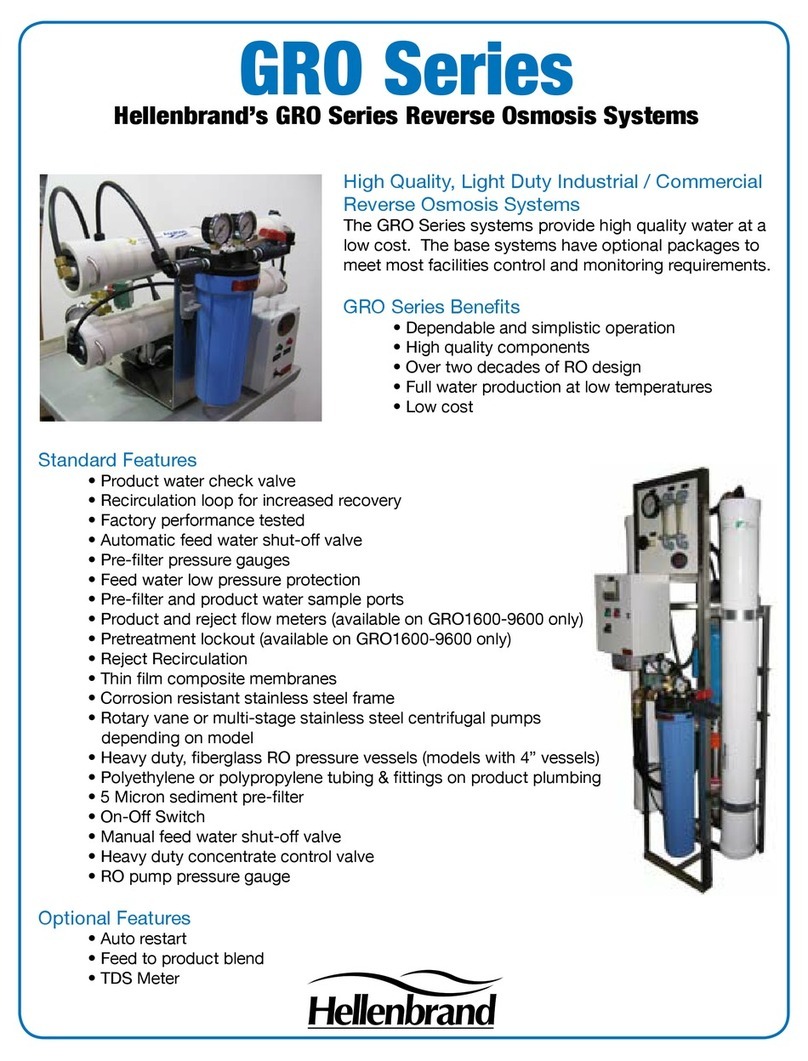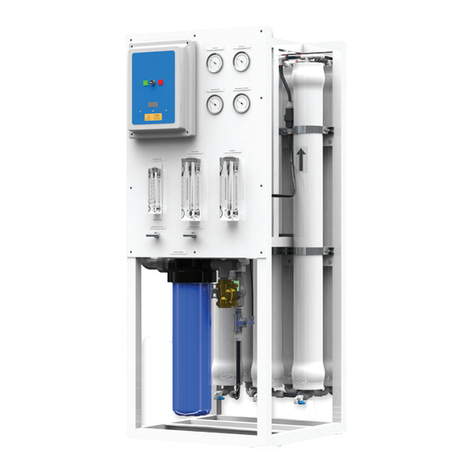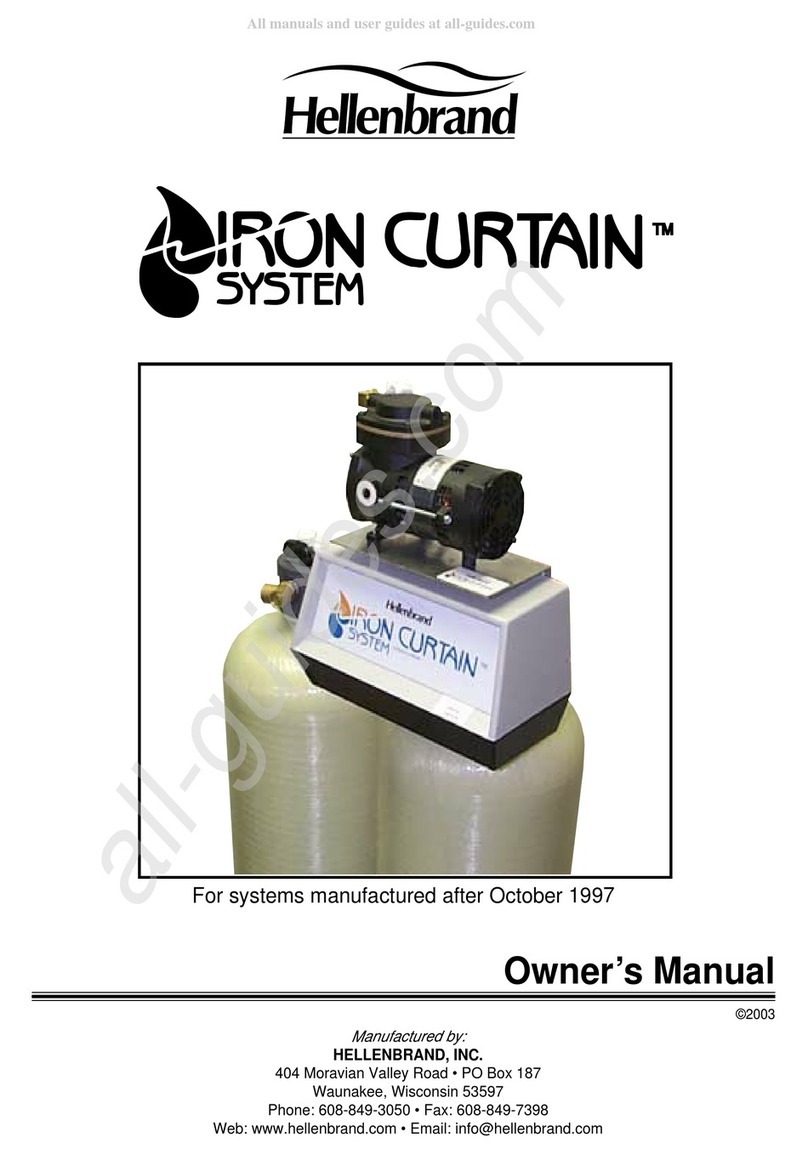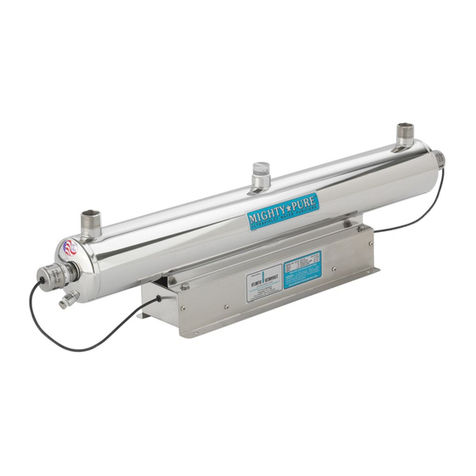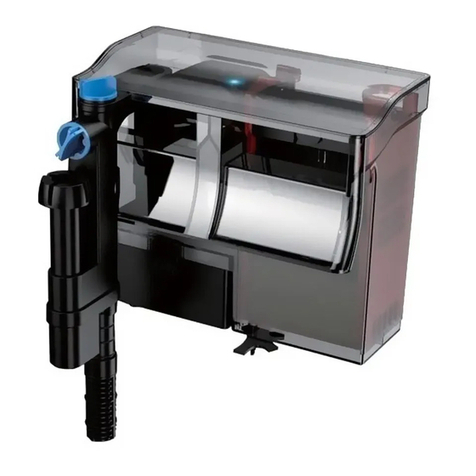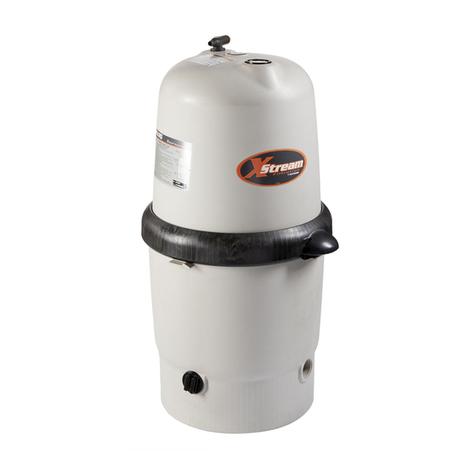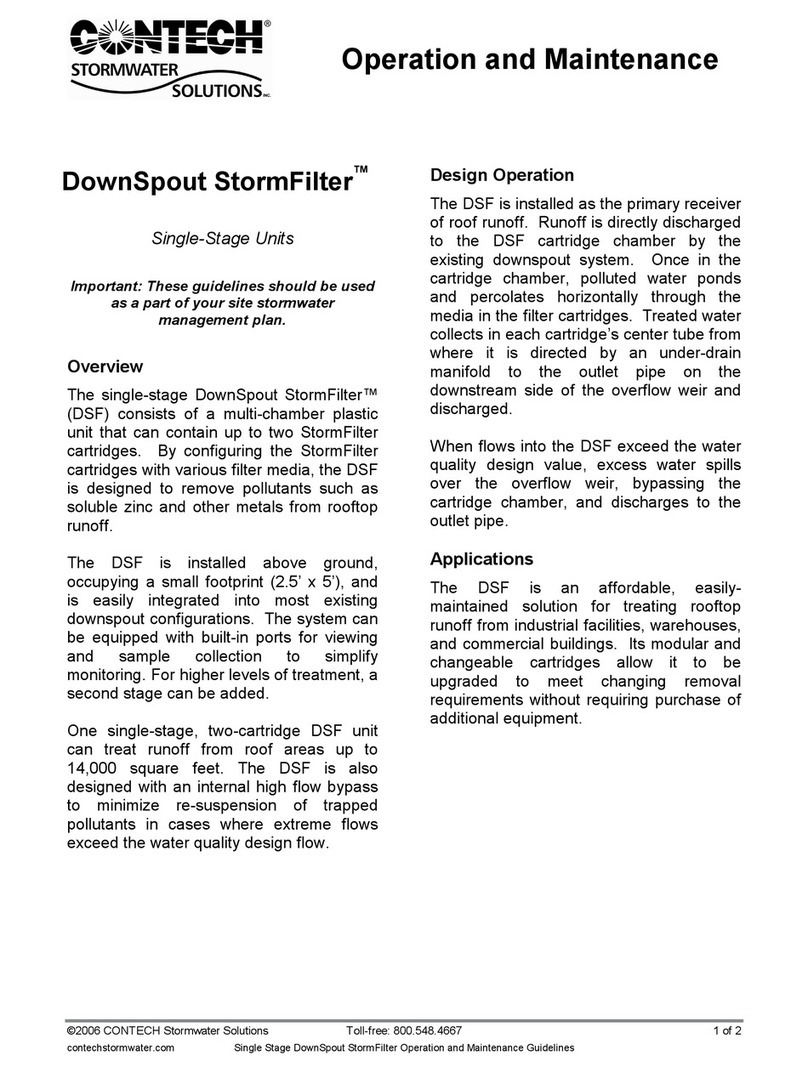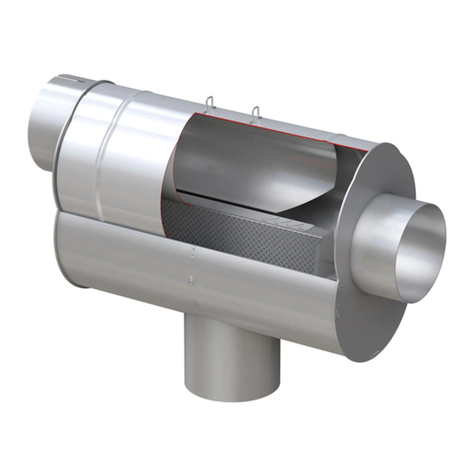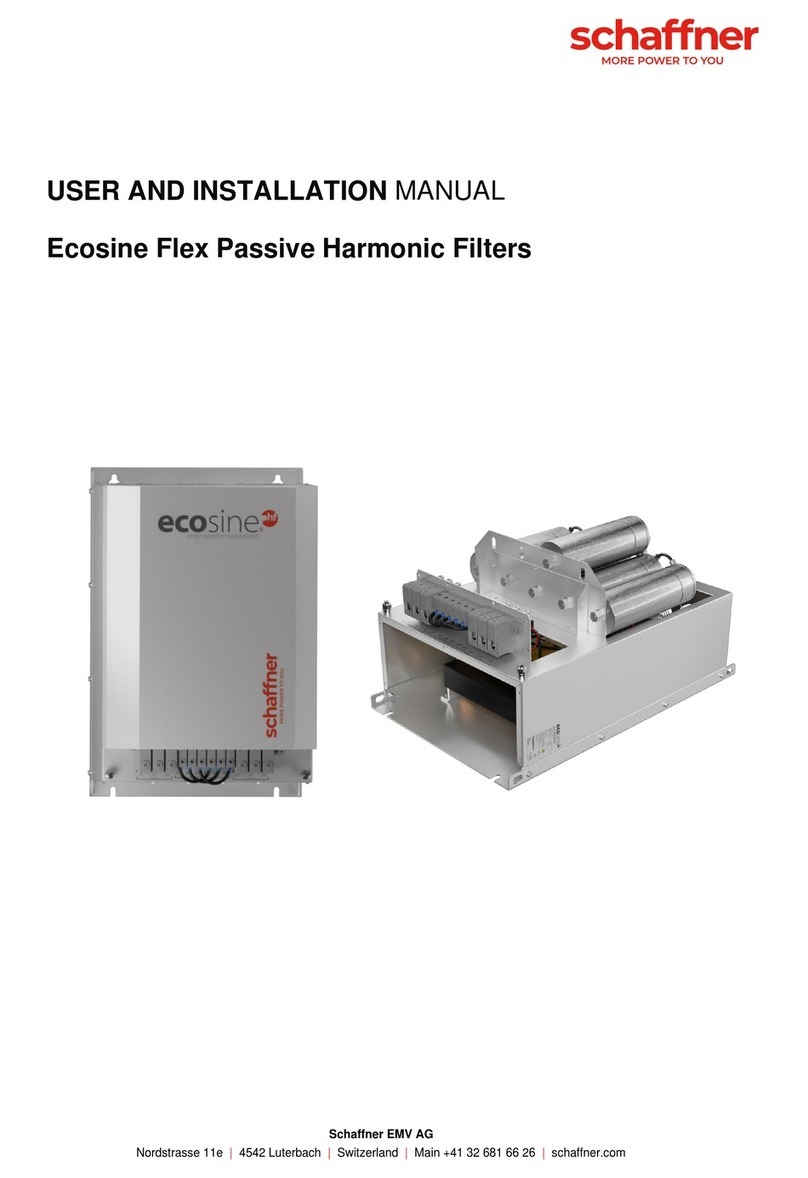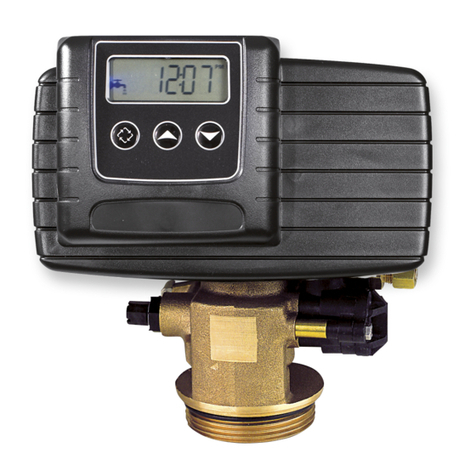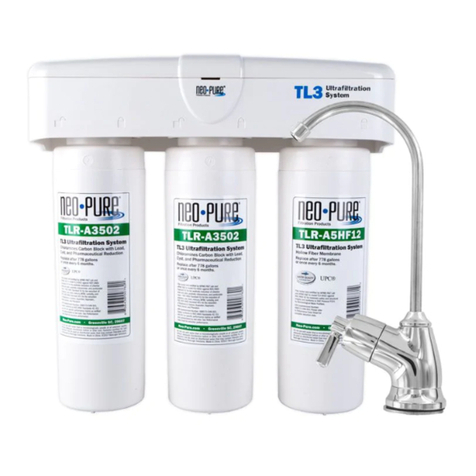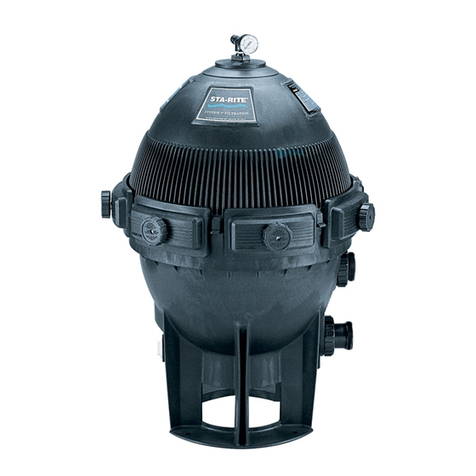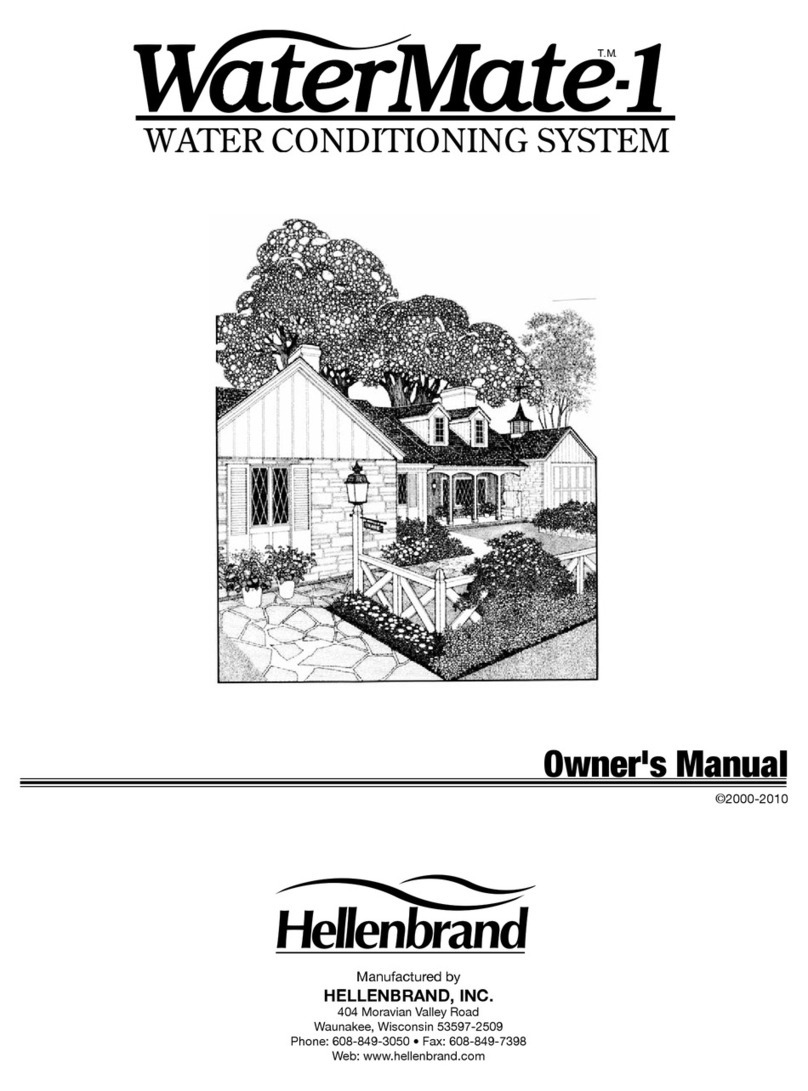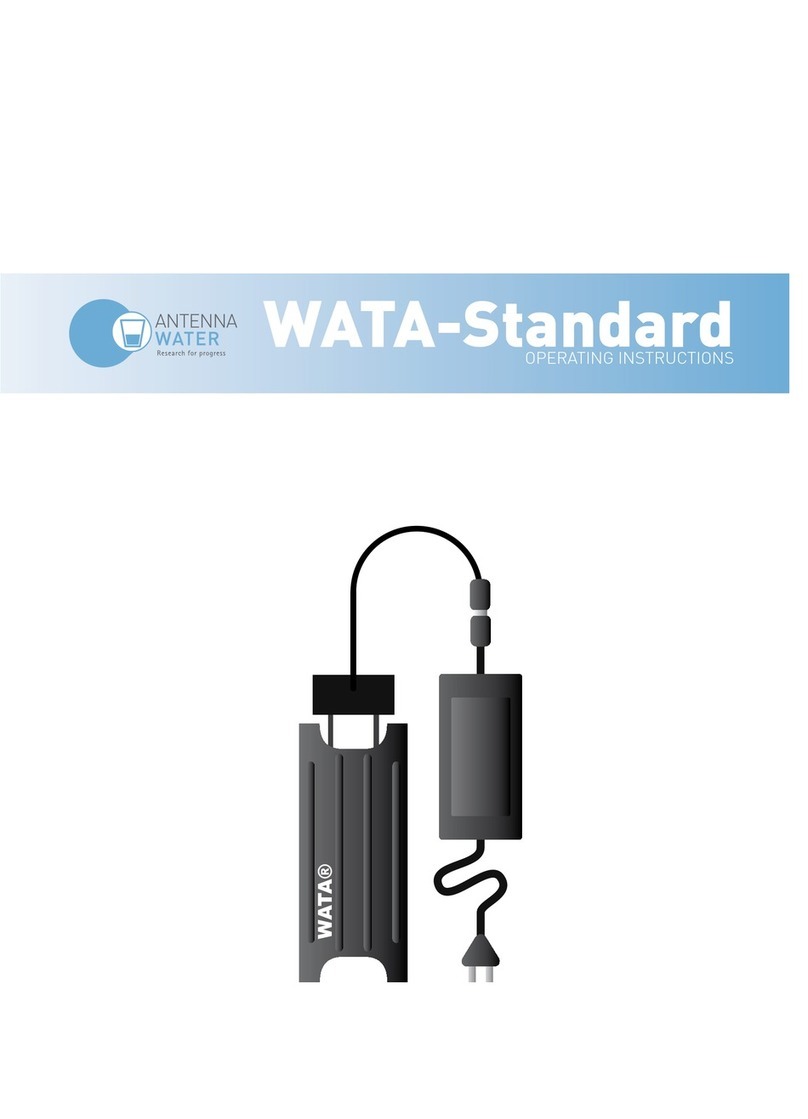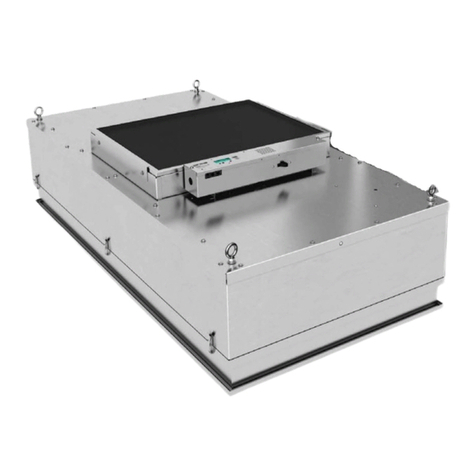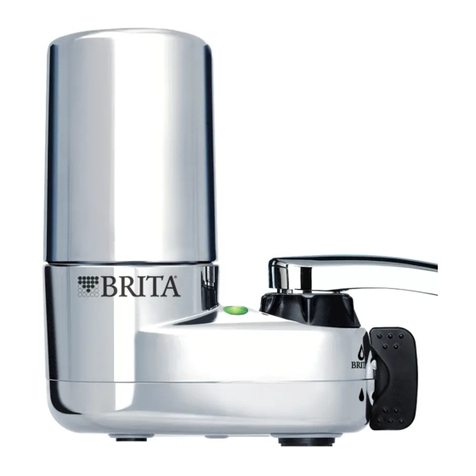
5
Start Up Instructions
pH — The pH level of the inuent water must be 7.0 or higher
for iron oxidation reaction to proceed per the engineering
specications.*
Iron — This system is rated for 6.0 ppm of ferrous (clear water)
and/or ferric (red water) iron.*
Hydrogen Sulde — Sometimes referred to as "rotten egg" odor.
This system is rated for 5.0 ppm hydrogen sulde. Hydrogen
sulde levels vary depending on barometric pressure.*
Manganese — Limit 1.0 ppm; amounts present over 1.0 ppm may
gradually prevent iron removal. Note: For optimum manganese
reduction, pH should be greater than 8.5.*
Organic Matter (Tannins) – The presence of organic matter such
as tannins will prevent the oxidation process of converting the
dissolved element, such as iron or manganese, to a nonsoluble
precipitate or solid substance. In other words, organics can tie
up the iron preventing ltration. The presence of organics such
as tannins above 0.5 ppm voids any claims for this system
to perform as stated above. In some applications, tannin
levels below 0.5 ppm or the presence of other organics may
hinder the operation of this system.*
Operating Conditions
Total Dissolved Solids (TDS) — While TDS does not directly
affect iron removal, it is a good indicator of potential interference.
Most waters have TDS less than 500 and generally present no
problems to iron reduction. If any ion becomes excessive, it may
cause failure of iron removal. A TDS more than 500 ppm voids
any claims for this system to perform as stated above.*
*For application parameters outside the specied operation
conditions or additional information regarding the listed
items, contact your dealer.
Do not install on chlorinated water supplies - harmful by-
products may be formed with ozone.
This unit is not intended to aid in the mitigation of microor-
ganisms and is not duly registered as a pesticidal device.
The Storm ozone lter must not be used on bacteriologi-
cally unsafe water supplies, such as those with with
positive Coliform or E Coli bacteria tests.
Small amounts of hardness (0.5-2 gpg) may occur initially
when lters installed on soft water.
Specications
Iron Storm-10 10"x54" 1.0 1" 4 5.3
Iron Storm-12 12"x52" 1.6 1" 6 7.5
Iron Storm-13 13"x54" 1.9 1" 7 10
Iron Storm Models
Filter
Tank
Size
(1)
Backwash
Rate
GPM
Max.
Service
Flow
GPM
Inlet/
Outlet
Media
Cu. Ft
(1) Water temps above 60° F will require a higher backwash rate. Consult factory.
For optimal results, allow the lter media to soak for a
minimum of 12 hours prior to install. This
helps to main-
tain the manufacturer’s specied
ltration properties.
1. Complete all plumbing connections; inlet, outlet and drain
line.
2. Place bypass valve in bypass position. Turn on main
water supply and open a cold ltered faucet to ush piping
of any air and/or foreign material. Run until water is clear.
3. Open inlet valve slowly on bypass until it is in fully open
service position. Let water run to drain until
clear. Plug
unit into 120V outlet and remove cover and plug trans-
former connection into 4-prong connection
on circuit board
labeled power. Valve will return to service position once
this connection is made.
4. Let media soak for 15 minutes before proceeding.
5. Initiate backwash by holding “REGEN” button down until
piston movement is heard.
6. Let backwash continue until cycle is done. When “RINSE”
is displayed, push the REGEN button again to move into
the SERVICE position. Let the system settle for 5 minutes.
7. Repeat the backwash and settle steps (5&6) for a total of
three times.
NOTE: It takes several backwash cycles before all the media
nes are removed. Elimination of the 12 hour soak procedure
may result in more backwash cycles required to remove the
media nes.
Failure to follow proper start-up may result in
equipment malfunction not covered by warranty.
Iron Applications
0.3 - 2.0 ppm Iron - Every 3rd Day
2.0 - 4.0 ppm Iron - Every Other Day
4.0 - 6.0 ppm Iron - Every Day
Backwash Frequency
Hydrogen Sulde Applications
0.1 - 1.0 ppm Hydrogen Sulde - 100 Gallon
1.0 - 5.0 ppm Hydrogen Sulde - 50 Gallon
Ozone Recharge Frequency






